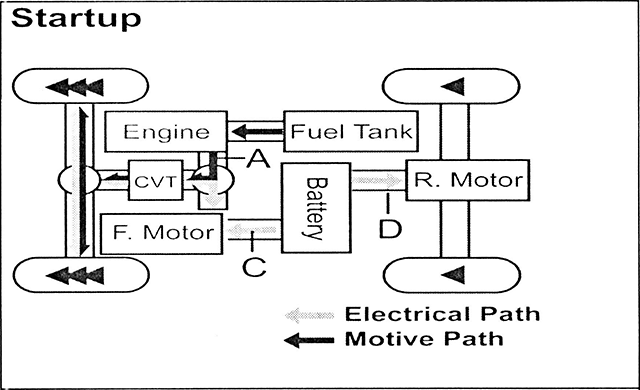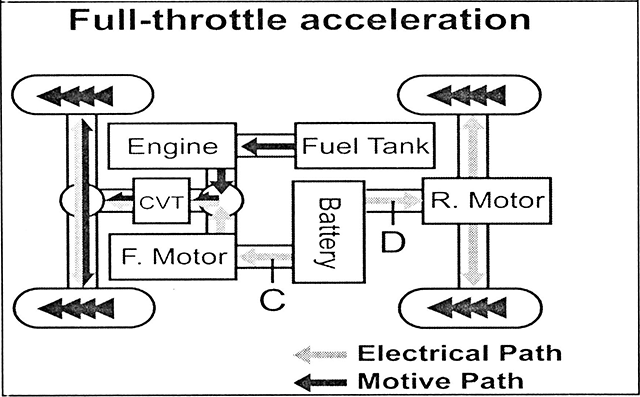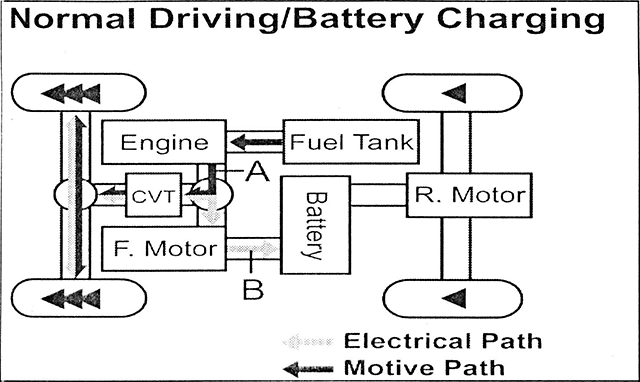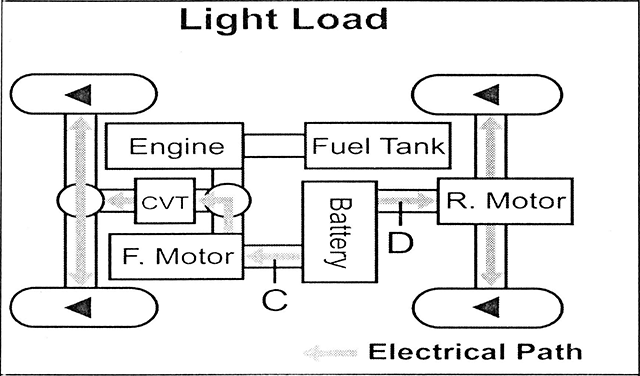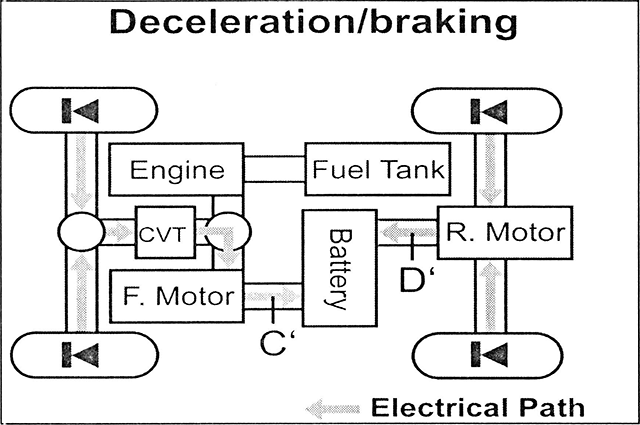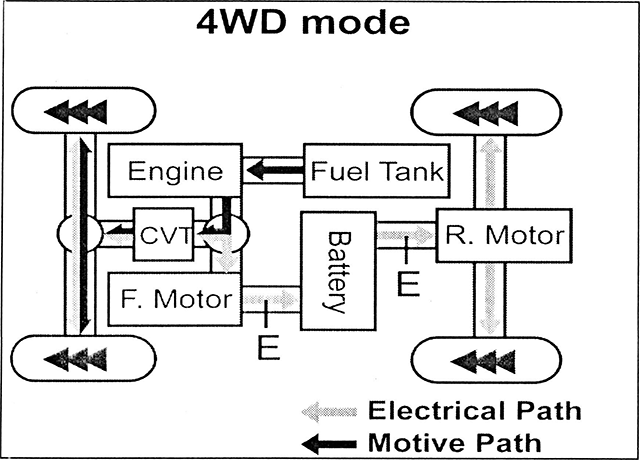Oct. 08, 1999
Toyota Introduces New Hybrid System
New Technology Leads to World's First 4WD Hybrid Powertrain
Tokyo―TOYOTA MOTOR CORPORATION (TMC), riding on the success of its hot-selling hybrid Prius sedan, leaped two more steps ahead of the competition today when it unveiled its new minivan-minded Toyota Hybrid System-CVT (THS-C) and the world's first hybrid 4-wheel-drive powertrain, the "E-Four."
The front-wheel-drive THS-C consists of a high-efficiency gasoline engine, an electric motor and a continuously variable transmission. In the E-Four, this highly efficient combination is linked to a separate power-boosting rear motor. The result is strong performance, doubled fuel economy and reduced emissions―satisfying Japan's ultra-low-emission vehicle (J-ULEV) standards.
Toyota's engineers took a high-power, high-torque, 2.4-liter gasoline engine and gave it a high-expansion ratio cycle, which creates high thermal efficiency for the THS-C. In the E-Four, under normal driving conditions the engine's power is transferred to the front wheels through the CVT. During strong acceleration, the forward electric motor delivers added power to the front wheels; the rear motor kicks in to propel the rear wheels when even more boost is needed.
When engine efficiency is out of the optimum range, such as when the car first starts moving and during low-speed driving, the engine stops and the vehicle runs on the forward electric motor, transferring power to the front wheels alone.
Low-friction road surfaces bring out the most in the E-Four. When front-wheel slippage is detected, the power to the front axle is reduced by diverting power received from the engine. The front motor is then used as a generator to absorb engine power and produce electricity to drive the rear motor. The net effect is a transfer of power from the front to the rear wheels to combat the slippage.
Having two motors that can separately supply power to the front and rear wheels eliminates the need for the propeller shaft that connects the front and rear axles in conventional 4-wheel-drive vehicles. This makes the E-Four a lighter alternative and offers greater freedom in the vehicle package. Moreover, regenerative brakes on all four wheels collect a large amount of braking energy as electrical energy, raising the efficiency of the drive system.
Finally, the drive battery is a newly developed nickel-metal hydride battery that is compact and offers high performance. (See Attachment 3.)
In Japan's 10-15 testing mode. Internal data.
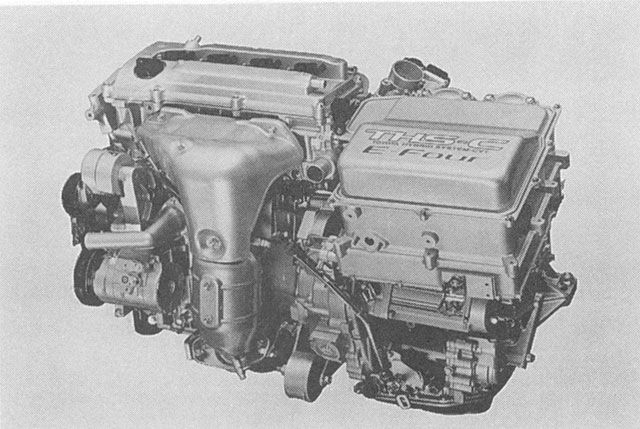
Toyota's New Hybrid System, THS-C
THS-C Schematic
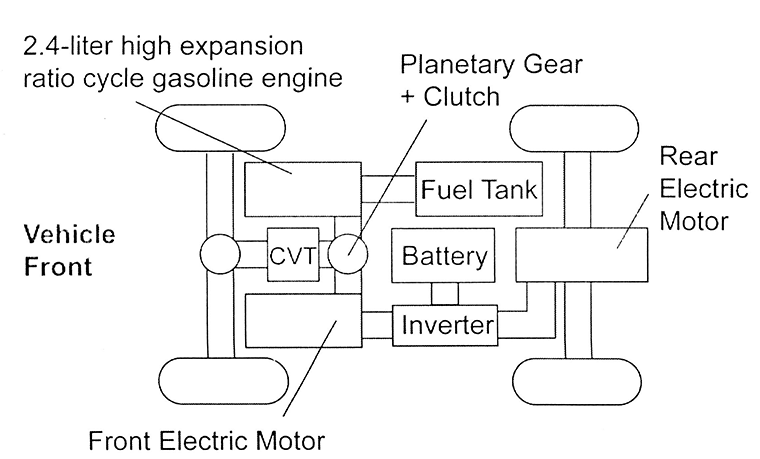
- When the vehicle stops, the engine stops.
- When the vehicle starts moving, electrical power from the battery is used to drive the front and rear motors, providing four-wheel drive. (C) (D)
- When the vehicle reaches the point where engine driving is judged to be more efficient, the engine is started and front-wheel drive is used. (A)
- Power is supplied from the battery, driving the front motor and increasing the drive power of the front wheels. (C)
- Battery power can also drive the rear motor for short periods of time, driving the rear wheels as well. (D)
- During normal driving, the engine drives the front wheels directly through the CVT. (A)
- When necessary, engine drive is used to run the front motor as an electrical generator, which recharges the battery. (B)
- During slow driving or when descending gentle hills, when engine efficiency is low, the engine is stopped and the battery drives both the front and rear motors in a four-wheel-drive configuration. (C) (D)
- The front and rear wheels are driven by the front and rear motors respectively and regeneration is performed to charge the battery. (C´) (D´)
- If wheel slip is detected in the front wheels during driving on slippery roads, engine power is used to drive the front motor as a generator.
- The energy thus generated is transferred to the rear motor to be used as power, creating extra drive in the rear axle. (E)
- Excess or insufficient power is adjusted by the battery.
- If drive power to the front wheels is excessive, the engine throttle is tightened to reduce slip.
Related Contents
- Toyota Develops New Fuel Cell Components (Attachment 2)
- Toyota Develops Compact Battery for Hybrids (Attachment 3)




